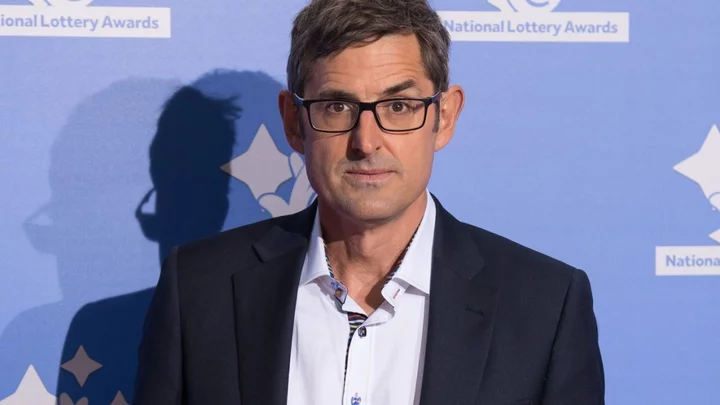Thanks to our brains and our reflexes, a lot of us don’t have to think twice about breathing. It’s a relatively unnoticeable, usually monotonous, involuntary function that, unlike my needy Cavalier King Charles Spaniel, doesn’t often need our attention to live. We breathe in, we breathe out, you know the drill. Easy, right? Maybe not. From huffing and puffing after a workout to dealing with a panic attack, or even just sitting at your desk during work, we can all learn how to breathe better.
Recently, it’s come to my attention that I’ve been breathing the wrong way for my entire life. And my guess is that many of you have been, too. The majority of us — around 60 to 80% of us, according to a study published in the International Journal of Sports Physical Therapy — are actually breathing much shorter and shallower than we’re biologically supposed to be. According to Rohan Mankikar, MD, a pulmonologist at NYU Langone Health, most of us are probably bad breathers. “We don’t really use our respiratory muscles as well as we should,” he says.
You might not think that learning how to breathe better should be at the top of your to-do list if you’re not a deep sea diver or Olympic athlete. You’ve gotten this far, right? The thing is, experts say breathing the right way improves lots of facets in day-to-day life, including stress and anxiety, so I decided to see for myself what I could do to improve my breathing.
What breathing properly looks like
Ally Maz, lead breathwork and yoga instructor at Open, an in-person and online mindfulness studio based in Los Angeles, tells Refinery29 that instead of breathing into our bellies and expanding them like we’re supposed to, many of us are breathing into our upper chests. These short, shallow breaths trigger our sympathetic nervous system, which is the system that automatically regulates body functions such as heart rate and blood pressure. It also triggers our flight-or-fight response, meaning that this kind of shallow breathing is helping to keep us in a constant state of stress. So our usually monotonous bodily function may actually be harming more than helping.
After panicking a bit because I realized that I was one of these kinds of breathers, Maz reassured me that it’s not entirely my fault — in fact, my quick breakdown probably made my breathing even worse, since stress itself often causes short, shallow breathing. There’s a lot of reasons why we’re stressed right now — work, health, relationships, and money are all examples of things that could contribute to our less-than-stellar breathing techniques. Even as I’m writing this, I’ve realized that I haven’t taken a good, deep breath all day. But how do we fix it?
How to breathe better
First, we need to work on checking in with ourselves and our breath throughout the day. “Most of us are sitting at our desks on our laptops, and it’s just finding those moments and tapping in,” Maz says. Instead of scrolling through TikTok for the thousandth time, ask yourself: How am I breathing right now? Is my breathing shallow? Is my mouth hanging open, and not because I’m looking at the newest photos of Zendaya on the red carpet?
The perfect breath, according to Maz, is also all about timing: “It’s about 5.5 seconds in and 5.5 seconds out — equal parts inhale exhale,” she says, pointing to a study that found this amount of time increases heart rate variability. “We want to be breathing into our bellies, which helps shift the nervous system into a more calm response. We want to get out of those really tight shallow breaths in the upper chest, which actually cause a lot of neck pain and tension in the shoulders.”
Dr. Mankikar says that diaphragmatic breathing is crucial here: “It’s like any other muscle,” he says. “The harder it works, the stronger it will get.” So, as you inhale into your diaphragm, your belly should expand out — kind of like a balloon. When you exhale, your belly should gently relax and draw in.
This breath should happen through our noses, because according to Maz, mouth-breathing is one of the biggest ways we can mess up our breathing. She says that breathing in through the nose is a must, since it has over 30 functions we may not even know about: “It humidifies the air coming into your lungs, it controls the temperature of the air,” she says. Our noses also produce something called nitric oxide, a molecule that increases circulation and therefore energy, and which may help us fight off airborne pathogens. Dr. Mankikar doubles down on this advice, saying that we should breathe in and out through the nose.
How to begin mindful breathing exercises
This sounded both simple and ridiculously difficult — how was I supposed to change my natural breathing habits? Was Maz really saying that every single inhale and exhale should last 5.5 full seconds each? Wasn’t that like, really slow for normal breathing?
For your everyday aspiration, you don’t have to get too hung up on timing (there’s no scientific research that proves the 11 second cycle is the perfect one, after all). Dr. Minkikar agrees, saying that as long as you’re breathing deeply in and out of your nose for one or two seconds, that’s perfectly fine. What’s important here is that you are learning to breathe deeper and more mindfully. “The time really depends on what the person is comfortable doing,” he says — but he adds that if you can slow down, it is beneficial, since slower breaths take more effort for our lungs to expand (which in turn gives them a little workout).
It sounded simple enough, so I tried it. For the past week, I’ve been attempting to consciously check in with myself, switching my short, shallow breaths to deeper, more intentional inhales into my diaphragm. And it’s been harder than I thought it would be. Instead of relying on my instincts to breathe, I had to consciously try to breathe in a new, more mindful way. I’d get set up, try some intentional, healthy breaths, and then get distracted and start breathing “normally” again. Breathing, I guess, isn’t as easy as I thought it was.
But, I’m going to keep at it — mostly because Dr. Minkikar says there are a lot of long-term benefits to deeper breathing. The muscles we use to breathe in are called inspiratory muscles, and they’re super important to keep strong and healthy. “If you make an active effort to take a deep breath in and use those muscles to expand your lungs, and if you do that over time and you strengthen those muscles… it can actually help reduce blood pressure and heart rate,” he says.
Why breathwork is beneficial
Once we do end up mastering the perfect, in-through-the-nose and out-through-the-nose breath, Maz recommends different breathwork techniques for different outcomes. There are calming exercises, energizing exercises, and even routines aimed at helping you to increase your lung capacity.
Practicing breathing through different breathwork exercises is especially helpful for anxiety and stress management. According to a 2017 study, participants who completed 20 breathwork sessions over eight weeks had significantly less levels of cortisol (aka our stress hormone) than the control group. Another recent study from the University of Colorado Boulder found that just five minutes of breathwork could lower blood pressure just as much as an aerobic workout does. Even the American Lung Association says, “If practiced regularly, breathing exercises can help rid the lungs of accumulated stale air, increase oxygen levels and get the diaphragm to return to its job of helping you breathe.”
To get a better sense of what a breathwork session would actually look like, I sat down with Davi Brown, head of content at Breathwrk, a breathwork app, and certified breathwork instructor. We did a few quick exercises from the app over Zoom: one for stress relief, one to enhance my mood and give me an energetic boost, one to strengthen my lung capacity, and one that’s supposed to help clear a stuffy nose.
The breathwork exercises were all pretty different, with the hardest one being the exercise that’s supposed to help strengthen lung capacity — and although I felt pretty weird huffing and puffing into my webcam, it did end up feeling better than the shorter inhales I’d been taking while sitting at my desk all day. The exercises were also able to give me some time to be mindful and present, which are two things I tend to struggle with throughout the work week.
All in all, everyone already knows that breathing is important, but hopefully the takeaway here is that actively giving your breathing attention is important, too. Dr. Minkikar even says that he thinks breathing is “one of the strongest and probably most powerful non-pharmacological maneuvers we have.” Turns out, sometimes the most monotonous things are the ones we should be paying the most attention to — even something as simple as breathing.









